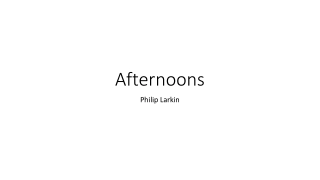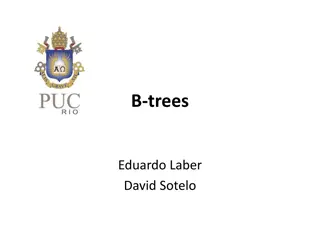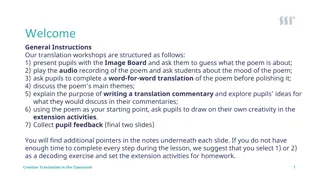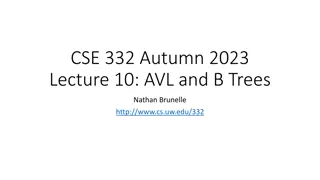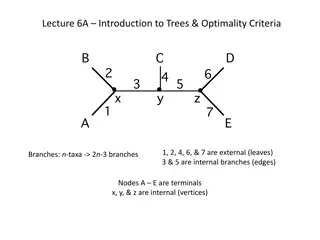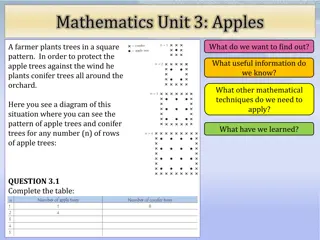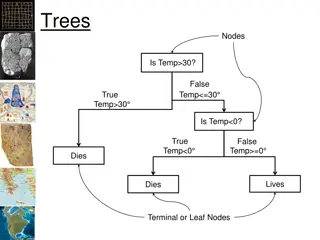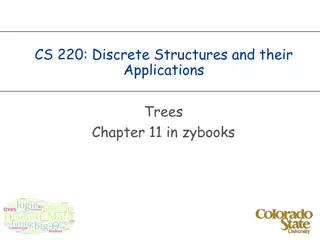Exploring Philip Larkin's Poem "The Trees" and Its Themes
The poem "The Trees" by Philip Larkin delves into the theme of renewal through the annual growth of leaves on trees, juxtaposing the cycles of nature with human mortality. Larkin's poignant observations highlight the profound changes occurring in springtime, evoking a sense of empathy towards nature. Despite its melancholic undertones, the poem also hints at the cyclical nature of life and renewal. Larkin's unique blend of pessimism and poetic mastery shines through in this contemplative piece, showcasing his enduring relevance as a celebrated British poet.
Download Presentation

Please find below an Image/Link to download the presentation.
The content on the website is provided AS IS for your information and personal use only. It may not be sold, licensed, or shared on other websites without obtaining consent from the author. Download presentation by click this link. If you encounter any issues during the download, it is possible that the publisher has removed the file from their server.
E N D
Presentation Transcript
THE TREE POEM PRESENTED BY,
the trees -Philip larkin Born Philip Arthur Larkin 9 August 1922 Radford, Coventry, Warwickshire, England Died 2 December 1985 (aged 63) Hull, Humberside, EnglandOccupation Poet, librarian, novelist, jazz critic Employer University of Hull (1955 85) Notable work The Whitsun Weddings (1964), High Windows (1974) Philip Arthur Larkin
PHILIP LARKIN AND THE TREES The Trees is a short poem that focuses on renewal, specifically the new growth of leaves on trees that comes round annually, part of the seasonal cycle in Nature. In essence, it is an observational poem with a kind of folk philosophy behind it, the speaker keenly aware of the profound changes going on and relating them to human mortality. With heightened sensitivity to the natural world at springtime, the speaker's empathy also comes through. There is a need to understand and put into context the processes at work deep inside the tree. This adds an edge of mystery to the poem, essential to the working of the whole piece. Philip Larkin is still highly regarded today as one of the most popular of British poets, technically astute in his portrayals of British life, the bespectacled explorer of events both urban and pastoral. He was however a reluctant poet, never fully at ease with his popularity, shunning the limelight and presenting himself as a somewhat pessimistiic purveyor of poetics. He could be cynical, gloomy, perverse, yet his mastery of form and language and his acute perceptive powers shine through the depressions. The Trees was written in 1967 and published in his book High Windows in 1974. It is one of several poems he wrote about spring and contains elements of sadness and happiness, grief and joy, despondency and hope. So typical of Larkin. In the poem, the speaker acknowledges the unfathomable yet is resigned to the fact that both tree and human will eventually succumb to the natural processes constantly at work, impossible to avoid.
The Trees The trees are coming into leaf Like something almost being said; The recent buds relax and spread, Their greenness is a kind of grief. Is it that they are born again And we grow old? No, they die too. Their yearly trick of looking new Is written down in rings of grain. Yet still the unresting castles thresh In fullgrown thickness every May. Last year is dead, they seem to say, Begin afresh, afresh, afresh.
Summary of poem Stanza 1 The theme of immortality is highlighted through the constant rebirth of the trees every springtime. Leaf in the first line of the poem symbolizes life, creating a lively mood and a new beginning of a life cycle. However, the image conveyed from Their greenness in a kind of grief shows the poet s pessimistic attitude towards the newly born trees. The color green represents the ideas of being fresh and new as well as naivety, the leaves are naive because they are not aware that nature has blessed them with the ability to reborn every spring. This is a kind of grief because unlike trees, humans are unable to reborn after they die, death is eventually the end of life. The poet s pessimistic attitude towards the eventual death of humans and their inability to reborn is clearly portrayed. Stanza 2 The poet conveys the theme of aging through the way the trees are able to hide their age whilst humans are unable to. The imagery of the rings of grain allows the reader to recognize the rings formed in a tree s trunk. larkin expresses his envy towards this because the trees are able to hide their true age in their trunk which shows as rings whereby humans are not able to do that. Instead, humans age and worries are revealed as wrinkles and gray hair. Larkin thinks that it is unfair that the trees can do this trick where as humans can not. Larkin s envy is evidently expressed through the clever disguise of the trees.
Stanza 3 Larkin indicates the theme of renewal through the repetitive life cycle of the trees. He expresses his admiration with the metaphor unresting castles . The trees are seen as a mighty fortress that protects all who seek refuge under them from the wavering heat or the thunderous storms. Although the trees are able to do things out of the human ability, he admires their ability to shelter and protect. His approval of the trees is further presented through the repetition of afresh in the last line of the poem. This reminds humans that we can imitate the trees by forgetting wrongdoing and problems in the past and start anew, to have a sense of hope for a better future. Larkin conveys his positive attitude towards the trees, moreover telling people that they can learn the good ways of the trees by spiritual renewal.
Structure of a poem The Trees is a 3 stanza poem, with full end rhymes and a regular metre (meter in USA). Rhyme The rhyme scheme is abba cddc effe and all are full rhymes, sounding the same: leaf/grief. This helps enclose the sense and echoes the naturally occurring cycles in life. Metre Iambic tetrameter dominates this short poem. Each line has four stresses, producing a steady, paced rhythm. FOR EXAMPLE: The trees / are com / ing in / to leaf Like some / thing al / most be / ing said;
The trees / are com / ing in / to leaf Like some / thing al / most be / ing said; So, four beats/stresses per line giving a da-DUM da-DUM da-DUM da-DUM feel to the reading. Naturally, when read, each reader will add their own unique voice and texture to the lines. Line 9 is an exception, containing nine syllables, an extra beat: Yet still / the un / resting / castles / thresh This extra beat is sometimes given the name hyperbeat (masculine in this case), which changes the iambic to the trochaic - note the two trochees (DUM-da DUM-da)in the middle of the line - altering the rhythm, reflecting the unrest in the tall trees. And note the pyrrhic foot (da-da), neither syllable stressed. Line 11 is different too: Last year / is dead, / they seem / to say, An inverted iamb, a trochee (DUM-da), starts this line. The other three feet are iambs.














